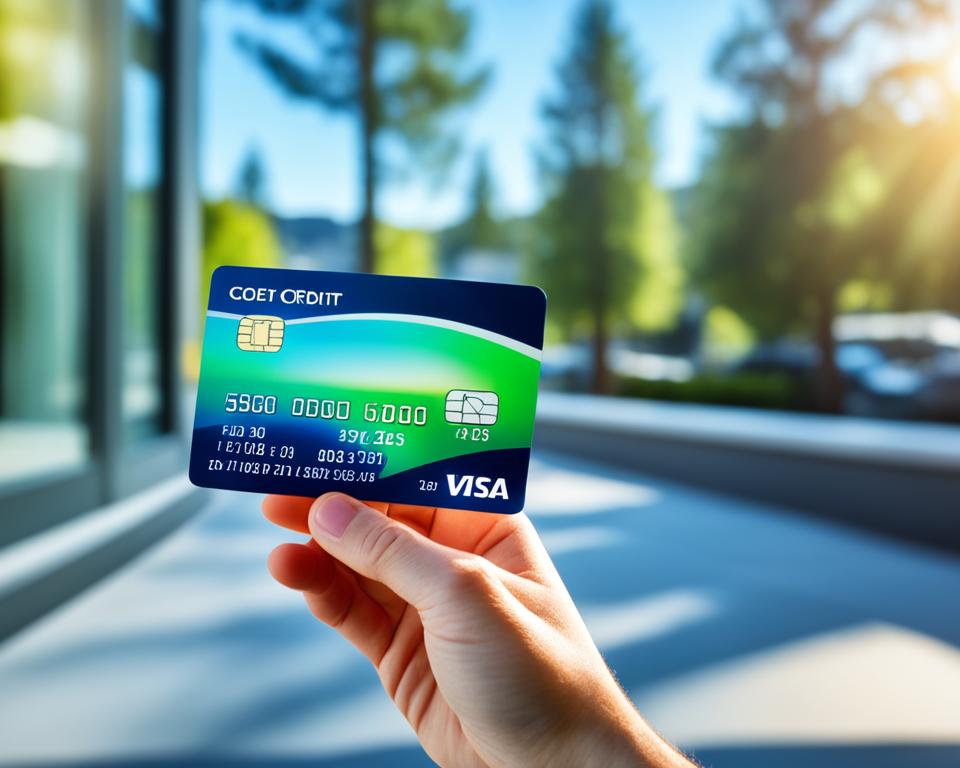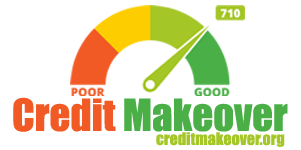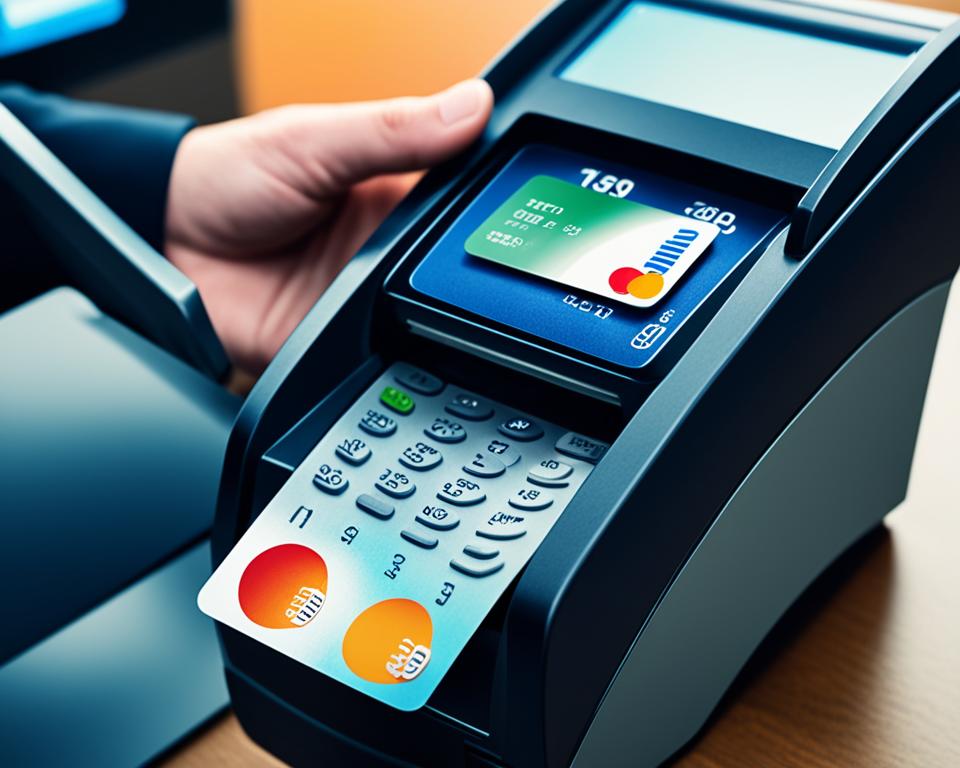Stepping into the realm of financial independence is an exhilarating journey, and selecting your first credit card is a cornerstone of that voyage. It’s a decision that not only grants you purchasing power but also the opportunity to establish a resilient credit history. However, with the plethora of options available, knowing how to choose your first credit card can pose a challenge for beginners. This guide intends to streamline the credit card application tips, making the process accessible and less daunting for those embarking on this critical financial milestone.
For many, a credit card is their first foray into the financial world, serving as a tool for future loans, mortgages, and even employment opportunities. It’s vital to remember that the best credit cards for beginners aren’t necessarily those with the most alluring rewards or lowest interest rates, but rather those that offer a solid foundation for building a healthy credit score. By weighing options prudently, one can avoid common pitfalls and fortify their financial future.
Key Takeaways
- The right first credit card can set the tone for your financial trajectory, emphasizing the importance of careful selection.
- Understanding the responsibilities of credit card ownership is crucial to maintain a sturdy credit history.
- Newcomers to credit might not qualify for top-tier cards, making it essential to explore beginner-friendly alternatives.
- Credit cards can teach financial discipline and encourage the development of sound spending habits.
- An informed decision on the first credit card choice can contribute to lifetime financial benefits.
Understanding Credit Card Basics
Embarking on the journey of credit card ownership is akin to learning a new language, one filled with terms and practices that shape your financial future. A credit card comparison is more than just about interest rates; it’s about understanding the instrument that could be pivotal in building credit with a credit card. Here, we unpack the essentials of credit cards and their influence on your credit score, along with the nitty-gritty details that determine your card’s efficiency and compatibility with your financial objectives.
What Is a Credit Card?
At its core, a credit card is a tool that extends a revolving line of credit to its holders. It functions as a dynamic financial instrument that allows individuals to make purchases, withdraw cash, and complete transactions, with the promise of repaying the borrowed sum at a later stage. Credit limits set the maximum that can be borrowed, and users can choose to repay the amount in full or over time, often with interest. They are an entry-point to credit markets, and their strategic use can result in a positive financial tenor. For anyone looking to enter the realm of credit, meeting credit card eligibility requirements is the first step towards unlocking this potential.
How Credit Cards Affect Your Credit Score
The relationship between a credit card and a user’s credit score is profound. Timely payments and prudent usage contribute positively to building credit with a credit card, whereas missed payments and high credit utilization can have detrimental effects. The activities reported to credit bureaus by card issuers include your payment history and the amount of credit you use. These reports become part of your credit history, influencing your credit score—a numerical expression of your creditworthiness that future lenders will heavily weigh.
Common Credit Card Features and Terminology
As with any financial product, credit cards come with an array of features and terminology that can seem bewildering to the uninitiated. Knowing these terms is beneficial for a methodical credit card comparison:
- Annual Percentage Rate (APR): This percentage represents the cost of borrowing credit over a year and varies card to card.
- Annual Fee: Some cards require a yearly charge for their use, thus a factor to consider in your total costs.
- Grace Period: This refers to the time allowed between the end of the billing cycle and the due date, during which no interest is charged on new purchases if the previous balance was paid in full.
Familiarity with these concepts allows consumers not only to compare credit cards more effectively but also to select one that can aid in building a robust credit foundation.
Whether you are applying for your first credit card or seeking to add another to your financial toolkit, understanding these basics is paramount in choosing a card that aligns with your goals and in navigating the path to credit empowerment.
The Realities of Starting with Credit Cards
Embarking on the journey of credit is an exciting step towards financial empowerment, but it comes with a roadmap that first-time credit card users must navigate carefully. While the prospect of earning credit card rewards can be enticing, the primary focus for beginners should typically be on building credit with a credit card. Often, the most advantageous cards with attractive rewards and benefits are accessible only to those with established credit histories. As a novice, setting realistic expectations and selecting a card tailored to your financial situation is crucial.
For those with limited or no credit history, secured credit cards can offer a viable gateway. These cards often require a refundable security deposit which then serves as the credit limit. While this may seem like an upfront cost, it’s actually a protective measure and a credit-building exercise. It provides the issuer with assurance and the user with a structured way to demonstrate fiscal reliability.
A contrasting feature between secured credit cards and their prepaid debit counterparts is their impact on a user’s credit history. It’s essential to distinguish that prepaid debit cards do not report to credit bureaus and thus, do not contribute to building your credit. Secured credit cards, on the other hand, usually report your activity, influencing your credit score based on how you manage your account.
Successfully managing a secured credit card means making timely payments and keeping a low balance relative to your credit limit. This disciplined approach can elevate your credit profile and potentially lead to an upgrade to an unsecured credit card. On the flip side, irresponsible behavior such as late payments or maxing out your card can have a lasting negative impact on your credit score.
When considering your first credit card, being informed and aware of your own spending habits and payment tendencies is pivotal. Use the card as a foundational tool for creating a credit history that reflects financial prudence and trustworthiness. In time, this strategy can open up more opportunities for enjoying the rewards that come with various credit card offers.
How to Choose Your First Credit Card
Stepping into the world of credit can be a significant move towards financial autonomy. With the array of options at your disposal, credit card comparison becomes an instrumental aspect of making a well-informed decision. Here are essential credit card application tips aimed at guiding you through the selection process to identify a card that best fits your financial lifestyle and goals.
The first step is to assess your financial health and spending habits. Are you a budget-conscious spender who tracks every dollar? Or do you have a penchant for the occasional splurge? These habits will shed light on your ability to manage credit responsibly. Understanding your financial behavior will also help you discern which credit card features—like interest rates and fees—are most pertinent to you.
It’s vital to conduct a thorough credit card comparison. This includes evaluating various credit cards based on several criteria that have a direct impact on your finances. To illustrate this, the following table provides a comparative look at different types of starter credit cards, highlighting aspects such as annual fees, APR ranges, and rewards.
| Credit Card Type | Annual Fee | APR Range | Rewards Program |
|---|---|---|---|
| Secured Credit Card | $0 – $50 | 17.99% – 24.99% | None to Basic |
| Student Credit Card | $0 | 12.99% – 22.99% | Cash Back on Select Categories |
| Starter Unsecured Credit Card | $0 – $35 | 19.99% – 29.99% | Simple Points System |
Notice the differences among starter card types. Secured credit cards, often recommended for beginners, may require a security deposit but offer lower APRs. Meanwhile, student credit cards might offer rewards for everyday purchases at no annual fee. The right card for you should have sustainable fees and a clear rewards system that you can benefit from. Assess each card’s costs and benefits to find the optimal fit.
Beyond fees and interest rates, consider additional benefits and protections. Some cards offer fraud protection, price protection, or extended warranties on purchases. Match these perks to your personal needs for added value.

Finally, think about the future. A credit card is more than a short-term financial tool; it’s a step towards building a solid credit history. Opt for a card from an issuer that offers upgrade paths to cards with greater rewards or higher credit limits as your credit score improves.
By taking a comprehensive and cautious approach to your first credit card, you lay down a foundation for sound financial management that will serve you for years to come.
Credit Cards and Credit Building: A Symbiotic Relationship
Delving into the realm of credit cards offers more than just a means to spend; it’s a chance to establish a financial foundation that can weather life’s storms. When approached judiciously, credit cards become a tool for building credit with a credit card, resulting in a symbiotic relationship where both the lender and the borrower benefit. Proper use can steadily lift your credit score, paving the way for future financial opportunities and rewards.
How Responsible Usage Improves Your Credit Score
Maintaining fiscal responsibility through your credit card usage is akin to nurturing a garden—the care you put in directly affects the bounty you reap. Keeping balances low, ideally under 30% of your credit limit, and ensuring on-time payments demonstrates to credit bureaus that you’re a trustworthy borrower. This can manifest in a higher credit score and better access to credit card rewards and favorable loan terms in the future.
Risks of Mismanaging a Credit Card
Conversely, missteps in managing a credit card carry a significant risk of undermining your financial health. Late payments, maxing out your card, and sporadic repayment behaviors can tarnish your credit report, leaving you with a lower score and diminished chances of acquiring competitive credit lines. It’s crucial to monitor your credit status diligently, catching and rectifying any potential issues early to maintain a robust financial profile.
Careful oversight of one’s credit card use is crucial, not only in building credit with a credit card but in laying the groundwork for a resilient financial future. Let the symbiotic relationship between credit cards and credit building serve as a guidepost in your personal finance journey, steering you towards smart decisions and away from common pitfalls.
Obligatory Expenses: Understanding Rates and Fees
When diving into the world of credit, understanding the rates and fees associated with a potential credit card is imperative. These obligatory expenses can greatly impact the overall cost of using credit and thus, should be meticulously examined before proceeding with a credit card application. Adhering to the credit card eligibility requirements is just the beginning; being cognizant of the potential charges will ensure a clear-eyed approach to choosing the right card.
Federal Regulations on Credit Card Disclosure
Federal law advocates for transparency in the credit card industry, requiring issuers to disclose crucial financial information to prospective cardholders. This action aims to empower consumers with detailed insights into potential expenses and is crucial for making informed financial decisions. By guaranteeing the disclosure of annual fees, APR ranges, and additional charges like foreign transaction fees and late fees, applicants are in a better position to assess whether a credit card aligns with their fiscal strategy.
Navigating the Schumer Box: A Primer
The Schumer box, named after Senator Charles Schumer who advocated for this level of disclosure, provides a concise summary of the rates and fees that a credit card carries. It’s vital for applicants to review and understand this information, as it can impact one’s ability to meet payment obligations and maintain a strong credit profile. Whether you’re a seasoned credit user or a newcomer seeking your first card, familiarizing yourself with the contents of the Schumer box is a fundamental component of credit card application tips.
The table below illustrates a hypothetical Schumer box, highlighting the type of information that one can expect to glean from it:
| Type of Charge | Description | Typical Range |
|---|---|---|
| Annual Fee | The yearly cost for the privilege of using the card | $0 – $500 |
| APR for Purchases | Interest rate applied to carried balances | 12.99% – 24.99% |
| Foreign Transaction Fee | Fee for purchases made outside the United States | 1% – 3% |
| Late Payment Fee | Fee incurred for payment past the due date | Up to $40 |
By dissecting the Schumer box and engaging with its breakdown of costs, applicants are equipped to navigate the complex landscape of credit card selection, ensuring their chosen card is a true asset rather than a liability.
When assessing credit card eligibility requirements and offers, it’s more than just looking at earning potential through rewards or other perks; it’s also about understanding how the fundamentals of credit card expenses work in your favor or against you. Hence, these credit card application tips are provided to arm you with the knowledge needed to make smart, cost-effective decisions.
Steering Clear of Credit Card Fees
Navigating the world of personal finance as a new cardholder can often feel like charting unknown waters, especially when it comes to handling potential fees. To ensure smooth sailing, the best credit cards for beginners are those that enable you to circumvent unnecessary costs. With the right credit card application tips, you can confidently choose a card that keeps additional charges at bay.
Many entry-level credit cards are designed with budget-conscious consumers in mind, offering no annual fee to lighten the financial load. These cards cater to individuals taking their first steps towards building credit without imposing the burden of recurring charges simply for holding the card.
Timeliness in payments is also a cornerstone of credit card management, as it helps avoid costly late fees—a simple yet effective way to keep your credit score climbing. Setting up payment reminders or automating your payments ensures that you never miss a due date, thereby preserving both your credit score and your savings.
The allure of international travel or online shopping from global retailers brings with it the specter of foreign transaction fees, often tacked onto purchases made abroad. To sidestep these extra costs, it’s worth considering cards that specifically do away with such fees, a perk usually reserved for more premium offers but sometimes found in cards for beginners too.
Cash advances can be a double-edged sword; while providing immediate funds, they typically incur high fees and interest rates from the moment of transaction. It’s wise to reserve cash advances for emergencies only, ensuring that your card is primarily a tool for credit-building rather than a high-cost loan.
Once a prevalent concern, over-limit fees have largely faded into obsolescence, provided you choose not to partake in over-limit protection services. By managing expenditures and keeping account balances well within your credit limits, you can avoid encountering this type of fee altogether.

In lieu of a table, below is a visual breakdown of common credit card fees and tips on how to avoid them:
- No Annual Fee Cards: Research cards that don’t charge yearly maintenance fees.
- On-Time Payments: Automate billing or set up alerts to never miss a payment deadline.
- Foreign Transaction Avoidance: Pick cards that don’t charge for international purchases if you’re a globetrotter or love shopping from international sites.
- Cautious Cash Advance Use: Limit cash advances to emergencies to prevent instant interest accruals and additional fees.
- Over-Limit Fee Prevention: Keep spending well within your credit limits unless necessary, opting out of over-limit services.
Finding a credit card that aligns with your financial strategy can be stress-free and rewarding. By carefully considering these tips and choosing wisely, you can enjoy the convenience and credit-building benefits of your first credit card without getting entangled in the web of common credit card fees. It’s a prudent strategy that leaves you more to invest in your financial future rather than dissipating funds through avoidable costs.
Cruising Past Credit Card Interest Charges
One of the surefire strategies for building credit with a credit card is mastering the art of dodging interest charges. This savvy financial maneuver can be a litmus test for fiscal discipline and is a cornerstone of a wise credit card comparison. When used astutely, this understanding can lead to substantial savings over time, helping to cultivate a sturdy financial foundation without the extra weight of accumulated interest.
Paying in Full vs. Carrying a Balance
One of the cardinal rules for savvy credit card users is the practice of paying off the entire balance each month. By settling your statement before the due date, you’re able to completely avoid interest on purchases, thus keeping your cost of borrowing at an enviable zero. Conversely, should you opt to carry a balance, the reality is that interest starts to accumulate immediately—not just on your existing balance, but on new purchases as well.
To highlight this, consider the analogy of a ‘financial race’—paying in full represents a sprint to the finish line without any added weight, while carrying a balance is akin to running the same race with a backpack gradually filling with rocks, in the form of interest. The heavier the pack gets, the harder it is to maintain pace, let alone finish strong.
Utilizing Grace Periods to Your Advantage
The grace period provided by credit card issuers is a golden window of opportunity—an interest-free interval between the end of your billing cycle and the due date. Paying off your entire bill during this time ensures not only the avoidance of interest charges on the purchases made during that cycle but also keeps your credit utilization low, further bolstering your credit profile.
To make the most out of grace periods, set reminders or establish automatic payments aligned with your billing cycle. This practice doesn’t just inch you closer to the ideal of paying zero interest; it also instills a habit of punctuality and reliability that reflects positively on your credit reports, showcasing your commitment to financial responsibility.
Indeed, when it comes to managing a credit card, the journey towards interest-free use is both an educational and empowering one. Those who learn to navigate these waters early on are often set on a course for a healthier financial future—free from the turbulent seas of unnecessary charges.
Paying More Than the Minimum: A Strategy to Avoid Debt
Embarking on the responsible management of credit often begins with embracing one of the most strategic credit card application tips: paying more than the minimum required amount on your credit card bill. This practice is essential for novice cardholders, particularly those looking for the best credit cards for beginners, to avoid the pitfalls of prolonged debt and escalating interest costs associated with minimum payments.
While the minimum payment may appear as a convenient and manageable figure on your monthly statement, it is, in essence, a deceiving suggestion that can lead to an extended period of indebtedness. The reality that lurks behind paying only the minimum is that it contributes to a growing financial burden due to accumulated interest, making it much more difficult to clear the balance in the long run.
Adopting a habit of paying more than the minimum – and ideally, the full balance – not only alleviates the additional costs of borrowing but also strengthens your control over your financial obligations. This disciplined approach reflects positively in your credit history and is a testament to your commitment to fiscal responsibility.
An illustrative breakdown of the impact of paying more than the minimum is given below:
| Minimum Payment | Interest Accrued | Time to Pay Off | Total Cost |
|---|---|---|---|
| Minimum Due | High interest over time | Several years | Substantially more than original debt |
| More than Minimum | Lesser interest over time | Reduced payoff time | Closer to original debt |
| Full Balance | No interest (if paid during grace period) | Monthly | Original debt without additional costs |
To ensure that your credit journey is rooted in healthy financial practices, consider setting a personal benchmark that exceeds the minimum payment. This choice not only fosters a resilient credit score but also positions you optimally to take advantage of future credit card rewards and benefits. Indeed, one of the hallmarks of utilizing credit wisely lies in seeing beyond the allure of minimal monthly payments and recognizing the value in a clean and controlled financial slate.
The High Price of Late Payments
When it comes to building credit with a credit card, maintaining a punctual payment schedule is pivotal. Unfortunately, late payments can have a cascading effect on financial health, not only incurring significant late fees but also triggering higher penalty APRs. These amplified costs can be a stumbling block in the process of credit building. Beyond these immediate financial penalties, late payments—if neglected beyond 30 days—can lead to severe damage to one’s credit score. This decline in credit standing can put future loans or credit card approvals in jeopardy and increase future borrowing costs.
Employing strategies such as automating payments or diligently tracking due dates is highly recommended. Such measures can greatly minimize the risk of late payment repercussions and help maintain a positive and robust credit score, which is essential in any strong credit card comparison. Ultimately, these practices are not only about avoiding fees—they are about preserving the integrity of one’s financial reputation and standing.
The table below outlines the typical consequences of a late payment on a credit card, offering a clear illustration of why such lapses should be diligently avoided:
| Consequence | Details | Impact |
|---|---|---|
| Late Payment Fees | Additional charges on top of your owed balance | Immediate financial loss |
| Penalty APRs | Elevated interest rates applied to balances | Increased cost of borrowing |
| Credit Score Damage | Indication of unreliable repayment | Long-term impact on creditworthiness |

Steering clear of these deterrents is about more than money; it’s about securing one’s financial future and ensuring that one’s journey in building credit with a credit card progresses unhindered. It reinforces the need for credit card holders to compare not just the benefits, but also the protective features of credit card offers. Through diligent management of payment schedules, individuals can continue to build their credit positively and responsibly.
Utilization Ratio: Keeping Your Credit in Check
When learning how to choose your first credit card, it’s essential to comprehend the importance of the credit utilization ratio. This figure represents the amount of credit you are actively using compared to your total available credit limit. Maintaining a low utilization ratio is crucial for displaying financial responsibility and managing a healthy credit score, which can subsequently influence your access to credit card rewards and other borrowing opportunities.
Credit utilization commands a significant role in credit evaluations, making it imperative for cardholders to keep this ratio below 30%. A lower utilization ratio implies that you are using your available credit judiciously, which lenders and credit bureaus view favorably. This is particularly vital for those who have just begun navigating the credit landscape and are seeking to establish a strong credit history.
To illustrate this, a table below outlines different credit utilization percentages and their potential impact on your credit score:
| Credit Utilization Ratio | General Recommendation | Potential Credit Score Impact |
|---|---|---|
| Under 10% | Excellent | May positively impact the credit score |
| 10% – 29% | Good | Generally seen as responsible usage |
| 30% – 49% | Fair | Could potentially begin to negatively impact the credit score |
| 50% and above | Poor | Likely to negatively impact the credit score |
Routinely monitoring and managing your credit utilization will reflect positively in your financial records and contribute to your financial flexibility. Hence, as you assess the myriad of credit card options available, prioritize those that not only offer appealing credit card rewards, but also empower you to maintain a healthy credit utilization ratio through higher credit limits or tools for better expenditure oversight.
First-Time Cardholder Tips for Handling Credit Card Fraud
As a first-time cardholder, navigating the complexities of credit can be challenging, especially when confronted with the threat of fraudulent activity. Understanding the credit card eligibility requirements and knowing credit card application tips is just one part of the journey. It is equally important to arm yourself with knowledge on how to protect against and address fraud to ensure your path to credit building is secure.
Proactive Measures to Protect Your Card
Protecting your credit card from unauthorized use begins with vigilance and proactive measures. Always keep your card details confidential; never share your number, CVV, or PIN with anyone. Be sure to monitor your account regularly to catch any suspicious activity early. Enabling alerts for every transaction can be helpful to keep track of your card usage in real time.
Steps to Take if Fraud Occurs
In the unfortunate event that your credit card details are compromised, it is critical to act swiftly. Contact your credit card issuer immediately to report the fraudulent charges and request the account be frozen or the card be canceled. Issuers often have zero-liability policies in place, which, backed by federal laws, can shield you from financial responsibility for unauthorized transactions. After reporting, keep a keen eye on your account and credit reports to ensure no further fraudulent activity occurs.
Deciding If You’re Ready for a Credit Card
Before diving into the world of credit card rewards and carving out a path to financial autonomy, it’s critical for prospective cardholders to take a step back and assess their readiness for what is both an opportunity and a responsibility. Understanding the importance of credit card application tips is just the tip of the iceberg when preparing to embark on this financial journey.
Evaluating Your Financial Discipline
Financial discipline serves as the foundation upon which all credit card management is built. Prospective cardholders should conduct a sincere evaluation of their spending habits, considering whether they tend to live within their means or often spend beyond their budget. The ability to refrain from impulse buying and the commitment to pay off balances in full are strong indicators of the financial discipline necessary for managing a credit card effectively. Those who can align their spending with the principles of a debit card—paying for purchases outright—demonstrate the fiscal restraint that’s essential for avoiding the accrual of debt.
Establishing Financial Goals
When contemplating how to choose your first credit card, setting clear financial goals is paramount. Whether you’re aiming for substantial credit card rewards in the long term or looking to build a solid credit score, your goals will inform your choice of card and how you use it. For example, beginners whose goal is to build credit might prioritize a card with a lower credit line to keep potential debt manageable, whereas others who are already disciplined spenders may seek cards that offer greater rewards for everyday spending. Establishing these goals upfront will guide cardholders in maintaining focus and making prudent financial decisions.
Researching Different Types of Credit Cards
When stepping into the financial scene, one of the most significant early decisions is selecting the best credit card for beginners. A credit card comparison can help navigate the variety available and identify which card aligns with your personal financial situation. This critical research will pave the way to not only acquiring a piece of plastic but unlocking a prospective financial tool that embodies both freedom and responsibility.
Secured vs. Unsecured Cards
Two primary categories exist for those new to credit: secured and unsecured credit cards. Secured credit cards are especially pertinent for beginners with no credit history or low scores. These require a security deposit, typically a few hundred dollars, which acts as collateral and usually determines the credit limit. They are instrumental for building credit, as issuers report your payment behavior to credit bureaus. Unsecured cards do not require such deposits and are granted based on your creditworthiness, which, for beginners, might be tougher to demonstrate.
Student Credit Cards: A Gateway to Credit
For those currently enrolled in postsecondary education, student credit cards offer a tailored gateway to the world of credit. These cards typically come with no annual fee and may offer rewards such as cashback on everyday purchases, making them an enticing option for young adults beginning their credit journey. When qualifying for these cards, issuers consider educational status, offering those in school a chance to build credit even with a limited income or credit history.
A thorough research and comparison of these credit cards can elucidate which type is the optimal match for a beginner looking to step responsibly into the world of credit.
Comparing Rates, Fees, and Rewards
Meticulously evaluating the myriad of credit card offers is a critical step to ensuring you make a well-informed decision that marries your financial needs with your spending habits. Whether you’re looking for cost-effective financial tools or aiming for lucrative credit card rewards, the right credit card can offer a fine balance. Here’s how you can effectively dissect these card features to decide on how to choose your first credit card.
APRs and Interest Explained
Annual Percentage Rates (APRs) are the lenses through which you can view the cost of borrowing on your credit card. They represent more than just a number but reflect the annualized expense tied to any balances you carry over. Understanding APRs is a significant part of the comparison process as they directly affect the affordability of a card. While some credit cards offer introductory 0% APR for a period, this rate will eventually normalize, and it’s this long-term figure you should consider when comparing options.
Evaluating Rewards Programs
For many prospective cardholders, credit card rewards can serve as a beacon guiding their choice. These rewards can come in various forms—cash back, points, or miles—and can add significant value to your purchases. However, it’s important to align these rewards with your spending patterns; a travel rewards card, for instance, is best for those who frequently travel, while a cash-back card might appeal more to the everyday spender. Be sure to also scrutinize the redemption options and any points expiration policy to ensure you can make the most of the rewards you earn.
By putting APRs, fees, and rewards under the magnifying glass, you can select a card that complements your financial outlook. Below is a comparative table that showcases various starter credit cards, revealing how each stacks up concerning these critical elements.
| Credit Card Type | Typical APR | Annual Fee | Rewards Benefits |
|---|---|---|---|
| Basic Unsecured Card | 19.99% – 25.99% | Varies (Many with $0 annual fee) | None to Basic Rewards Points |
| Cash Back Card | 13.99% – 23.99% | $0 – $95 (waived first year on some cards) | 1% – 5% Cash Back on Select Categories |
| Travel Rewards Card | 15.99% – 24.99% | $95 – $550 (some offer travel credits to offset fee) | Miles/Points on Every Dollar Spent, Bonus Categories, and Travel Perks |
| Student Card | 12.99% – 22.99% | Usually $0 | Lower Rewards Rate, but easy approval and building credit |
While the allure of “no annual fee” or “high rewards rate” cards can be tempting, they must be cautiously considered against the backdrop of APRs and interest rates. This understanding forms a cornerstone when you are looking to both build credit and possibly earn rewards. Use this table as a starting point in your comparison to ultimately achieve financial benefits rather than unwelcome surprises.
Best Practices for Responsible Credit Card Use
Embracing responsible credit card use from the onset lays the foundation for a solid financial future, with benefits reaching far beyond the immediate convenience of cashless payments. Ensuring deliberate and informed use of credit cards not only promises a sterling credit score but also instills habits that safeguard against financial missteps. Here we unite crucial credit card application tips with tried-and-true practices for building credit with a credit card.
Paying on Time, Every Time
On-time payments are more than a good habit; they’re the linchpin of responsible credit use. Each punctual payment is a positive mark on your credit history, influencing your credit score favorably. Setting up automatic payments through your banking institution can offer peace of mind and a safeguard against accidental oversight. Alternatively, embracing digital calendars or reminder systems assists in keeping due dates and billing cycles at the forefront of your financial considerations.
Monitoring Your Spending Habits
Keeping close tabs on spending doesn’t just prevent budgetary bloat—it’s also a cornerstone of credit utilization management. Vigilance in tracking your expenditure aligns your credit card use with financial realities, avoiding pitfalls like maxing out your card. Furthermore, by deploying monitoring tools provided by credit card issuers, such as alerts or spend trackers, you can remain alert to your card’s activity, helping maintain a credit utilization ratio conducive to a flourishing credit score.
Recognizing the triggers of excessive spending and curbing the tendency to rely on credit for impulsive purchases are just as crucial as the strategic use of credit itself. As you navigate your financial path, combining the awareness of spending habits with disciplined budgeting contributes immensely towards building credit with a credit card.

In summary, acknowledging the power and responsibility inherent in credit card ownership is essential. By adhering to these best practices, you empower yourself not just to manage finances prudently today but also to pave the way for a financially secure tomorrow. As you gather these credit card application tips and integrate them into your daily life, your journey of building credit with a credit card becomes one of informed strategy rather than happenstance.
Conclusion
Embarking on the quest to how to choose your first credit card is a journey marked with strategic decisions that pave the path to financial prudence. Throughout this guide, we’ve explored the crucial tenets of selecting a card that aligns with individual financial landscapes—underscoring the importance of research, an understanding of terms, and a commitment to responsible usage. Stewarding these principles not only nurtures one’s credit score but also establishes a foundation for the secure handling of personal finances.
Takeaways for Future Credit Card Owners
For future credit card owners, the insights gleaned highlight the value in selecting the best credit cards for beginners through a lens of informed deliberation. Recognizing that secured and student credit cards often serve as ideal starting points, the emphasis on building a solid credit foundation is paramount. Managing credit with intention and diligence is more than a financial task—it’s a fundamental skill. This acumen ensures future cardholders not only thrive in maintaining their credit health but also in reaping the associated rewards of sound credit management.
Making an Informed Decision on Your First Credit Card
Making an informed decision on your first credit card involves moving beyond enticing rewards and delving into how a card will serve your long-term financial goals. It’s essential for beginners to consider how a particular card will help them build credit responsibly. This involves assessing personal spending habits against the backdrop of potential fees and interest rates. By embracing a conscientious approach to credit—from punctual payments to staying within credit utilization boundaries—prospective cardholders stand to gain the most from their introductory foray into the realm of credit.
FAQ
What is a credit card?
A credit card is a financial tool that provides a revolving line of credit with a set limit, which can be used to make purchases, withdraw cash, or transfer balances. It requires repayment with potential interest and offers an opportunity to build credit history with responsible use.
How do credit cards affect your credit score?
Credit cards affect your credit score through payment history, credit utilization, length of credit history, new credit inquiries, and the mix of credit types. Timely payments and low utilization positively influence your score, while missed payments and high utilization can harm it.
What are some common credit card features and terminology?
Common features and terms include APR (Annual Percentage Rate), which is the interest rate charged on balances; annual fees, charged for card ownership; grace periods, the time during which no interest is charged on new purchases; and rewards programs, offering incentives such as cash back or points for spending.
How should I choose my first credit card?
Choose your first credit card by assessing your financial habits and goals, researching different card options suitable for beginners, and comparing terms like APR, fees, rewards, and credit-building potential to ensure it aligns with your needs.
How can responsible usage improve my credit score?
Responsible credit card usage can improve your credit score by creating a history of on-time payments, keeping credit utilization low, and by maintaining a longstanding account, all of which are key factors in credit scoring algorithms.
What are the risks of mismanaging a credit card?
Mismanaging a credit card can lead to excessive debt, high-interest costs, late payment fees, and a negative impact on your credit score, which can have long-term consequences for future borrowing and financial opportunities.
What are the federal regulations on credit card disclosure?
Federal regulations mandate that credit card issuers disclose rates, fees, and other costs to potential customers, typically through the Schumer box, which makes it easier for consumers to compare cards and understand their financial obligations.
How can I navigate the Schumer Box?
To navigate the Schumer Box, review the summarized credit card terms including interest rates, fee structures, grace periods, and penalty charges to make an informed decision about whether the card meets your requirements.
What’s the best way to steer clear of credit card fees?
To avoid credit card fees, select a card without an annual fee, pay the bill on time to prevent late fees, and avoid transactions that incur extra charges like cash advances and foreign purchases.
How can I utilize grace periods to my advantage?
Utilize grace periods by paying off your entire balance within this timeframe to avoid interest charges. Grace periods typically last between 21 and 25 days after the billing cycle ends, giving you a window to pay without accruing interest on new purchases.
Why is it important to pay more than the minimum payment?
It’s important to pay more than the minimum to avoid extending the debt repayment period and accruing more interest, reducing overall debt faster and saving money in the long term.
What is the high price of late payments?
Late payments can lead to hefty fees, increased interest rates, and significant damage to your credit score, especially if they exceed 30 days past due. Consistent late payments may also jeopardize future credit opportunities.
How does the credit utilization ratio affect my credit?
The credit utilization ratio affects your credit by indicating how much of your available credit you’re using. A lower ratio, preferably below 30% of your limits, suggests responsible credit management and positively impacts your credit score.
What proactive measures can I take to protect my credit card from fraud?
To protect your credit card from fraud, monitor your account activity regularly, set up transaction alerts, maintain secure passwords, and be mindful of where and how you share your card information online and in person.
What steps should I take if I experience credit card fraud?
If you experience credit card fraud, report any suspicious charges immediately to your card issuer, review your credit reports for other fraudulent activity, and possibly place a fraud alert on your credit files.
How can I evaluate whether I’m ready for a credit card?
Evaluate your readiness for a credit card by considering your ability to manage a budget, the responsibility of making on-time payments, and whether you can handle the temptation to overspend, ensuring you’ll use the card wisely to build credit rather than accrue debt.
What’s the difference between secured and unsecured credit cards?
Secured credit cards require a security deposit which typically serves as the credit limit, making them accessible for individuals with no or limited credit history. Unsecured cards do not require a deposit and are granted based on creditworthiness.
What are student credit cards?
Student credit cards are designed for postsecondary students as an entry to building credit. They usually have lower credit limits and more lenient eligibility requirements but can include perks such as rewards or educational resources.
What should I consider when comparing APRs and evaluating reward programs?
When comparing APRs, consider the long-term costs of carrying a balance. For reward programs, assess how the rewards align with your spending habits and if the benefits outweigh any potential fees or higher APRs associated with the card.
What are some best practices for responsible credit card use?
Best practices include paying your credit card bill on time, keeping spending within your budget, monitoring your credit utilization ratio, being aware of billing cycles, and steering clear of cash advances and high-interest debt.





